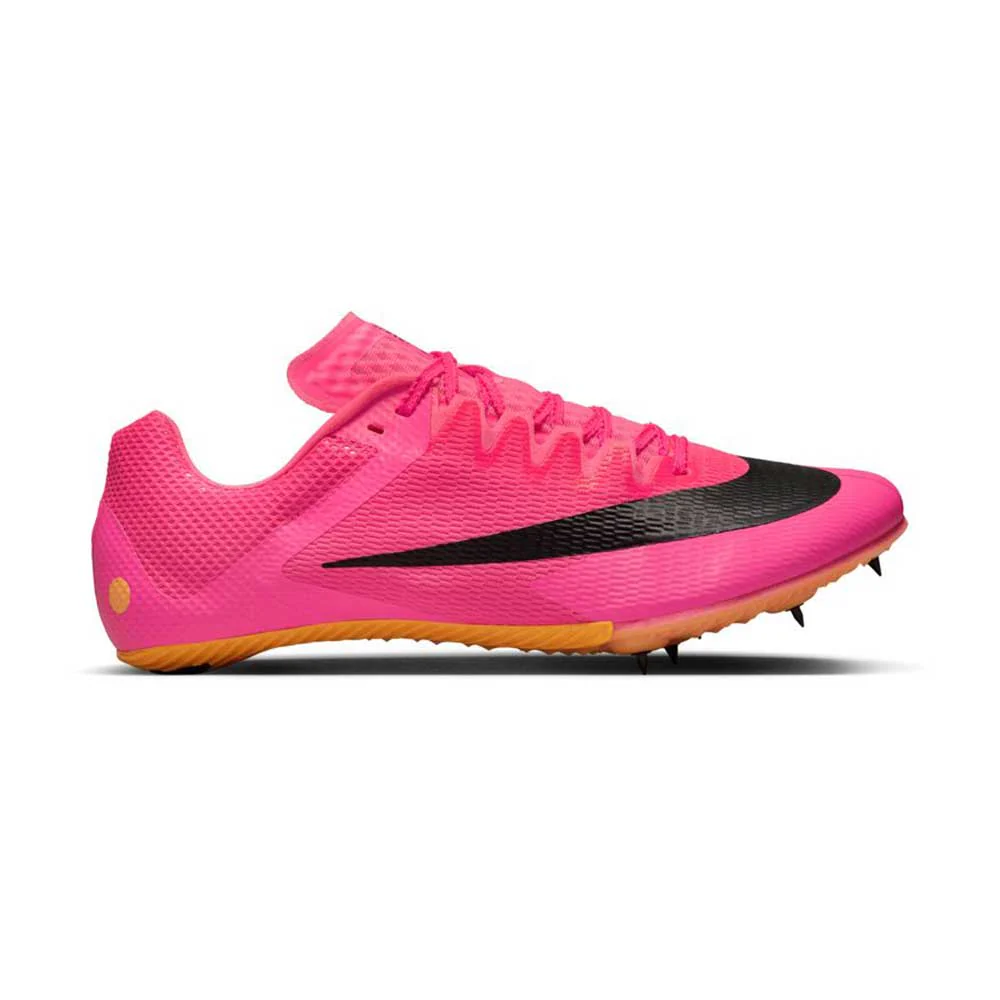
The Evolution of Track Spikes in Competitive Sports
The Evolution of Track Spikes in Competitive Sports
Track spikes play a crucial role in enhancing athletic performance. These specialized shoes are designed for runners across all distances. From sprints to marathons, track spikes provide runners with the necessary grip and speed. They have evolved significantly over the years. Understanding their development helps appreciate their impact on athletic performance. This blog explores the history, design, technology, and various types of track spikes. Each component contributes to a runner’s success on the track.
The History of Track Spikes
Track spikes date back to the late 19th century. Initially, athletes secured metal spikes to their shoes for better traction. While these early designs enhanced grip, they were often uncomfortable. As competitive running grew in popularity, so did the need for better footwear. By the 1920s, manufacturers began producing shoes specifically designed for track events. These shoes featured molded spikes that significantly improved performance. Furthermore, the advancements in materials led to lighter and more durable options. The evolution continued throughout the 20th century, focusing on performance and comfort.
In the 1960s and 1970s, track spikes underwent revolutionary changes. Nike and Adidas began to dominate the market with innovative designs. As a result, athletes gained access to shoes offering both support and enhanced grip. Depending on the event, athletes customized their spikes. They wanted shoes tailored to their specific needs. This trend of personalization continues today. Runners search for spikes that fit their style and performance requirements.
Furthermore, advancements in biomechanics influenced shoe design. Manufacturers started incorporating scientific research into their development processes. They analyzed runners’ movements and how shoes interacted with surfaces. Consequently, track spikes became more ergonomic and supportive. This change led to better performance and a decrease in injuries. Today’s spikes are the result of years of research, innovation, and athlete feedback. Therefore, they represent a blend of art and science on the track.

Design Features of Track Spikes
Track spikes have unique design features that set them apart from regular running shoes. The most notable feature is the spike plate. This is a rigid piece of material, typically made of carbon fiber or nylon, located on the shoe’s sole. The primary purpose of the spike plate is to provide stability during explosive movements. Athletes can generate power and speed more effectively. Additionally, the spike plate also supports a range of different spike configurations.
The next important feature is the upper material. Track spikes use lightweight, breathable materials. Often, mesh fabrics are utilized to ensure ventilation. This prevents overheating during intense races. Athletes benefit from lighter shoes because they can maintain speed without excess weight. Moreover, some manufacturers incorporate synthetic overlays for increased support. This combination of materials enhances both comfort and performance.
Another vital aspect is the fit. Track spikes often come in various widths and sizes. A proper fit is paramount for optimal performance. If a shoe is too tight, it may cause blisters. Conversely, a loose fit can hinder speed and stability. Most runners today prioritize finding a shoe that fits perfectly. Therefore, many brands offer customization options to meet individual requirements.
Finally, the type of spikes used plays an essential role. Spikes come in different lengths and materials, catering to various track events. For sprinters, shorter, sharper spikes provide explosive traction. Distance runners, however, benefit from longer, more durable spikes. Thus, the choice of spikes is critical in maximizing performance. Each design element works in harmony, enabling athletes to achieve their best on the track.

Types of Track Spikes
There are different types of track spikes, each designed for specific events. Sprint spikes are one of the most common types. These shoes feature a lightweight design with minimal cushioning. The emphasis is on speed and traction. Sprinters often prefer a sprint spike with shorter, more aggressive spikes for maximum grip. The shoes are designed to propel the athlete forward powerfully and efficiently.
Distance spikes differ significantly from sprint spikes. Distance spikes usually have more cushioning and a softer upper. This design provides comfort during longer races. Runners often use these shoes for events ranging from 800 meters to 10,000 meters. Moreover, distance spikes typically have longer spikes, providing stability on various surfaces. This versatility helps athletes perform across different track conditions.
Cross-country spikes are another specialized option. These shoes are designed for off-track performances, such as running on grass or uneven terrain. Cross-country spikes offer more traction and durability, essential for diverse running surfaces. Moreover, they often feature a rugged sole to handle different environmental challenges. This makes them ideal for not only racing but also for training purposes.
Then there are multi-event spikes. These versatile shoes cater to athletes competing in various track and field events. Multi-event spikes generally include moderate cushioning, making them suitable for a range of distances. The spiked sole features a configuration that allows for both sprinting and mid-distance running. This adaptability is critical for athletes participating in decathlons or heptathlons.
The Role of Technology in Track Spikes
Technology has played a pivotal role in the evolution of track spikes. Manufacturers continually innovate to enhance athlete performance. The introduction of 3D printing technology has revolutionized how spikes are made. This process allows for intricate designs that enhance performance and comfort while reducing weight. Custom-fit shoes are becoming more common due to this advanced production technique.
Additionally, the incorporation of smart technology into track spikes is on the rise. Some brands are experimenting with embedded sensors to provide real-time feedback. This data can help athletes track their performance metrics during practice and races. By analyzing metrics such as stride length, ground contact time, and speed, athletes can make informed adjustments to their training regimens.
Furthermore, advancements in materials science have facilitated the creation of innovative spike designs. The use of lightweight materials, such as Kevlar and advanced mesh, contributes to overall performance. These materials reduce fatigue and improve agility on the track. Athletes can focus on their performance rather than the hindrance of heavy footwear.
Moreover, the research behind the biomechanics of running is advancing rapidly. Understanding how the human body interacts with footwear has allowed manufacturers to design more effective spikes. Each component, from the sole to the upper, is developed through scientific analysis of stride patterns. Thanks to these improvements, athletes can experience better energy return and reduced injury risk.

Choosing the Right Track Spikes
Selecting the right track spikes can significantly impact an athlete’s performance. Runners must consider several factors before making a decision. The type of event is the primary consideration. Each running event requires specific features. By understanding these requirements, athletes can find the best shoe for their needs.
First, consider the spike configuration. Sprinters typically benefit from shorter-studded spikes. Distance runners, on the other hand, prefer longer spikes to maintain grip over extended periods. Analyzing personal running style is also essential. Some athletes run flat-footed, while others may have a forefoot or heel strike. This understanding can guide the selection process.
Next, fit and comfort are crucial elements. An athlete should always try on multiple shoes. This helps identify the best fit for their foot shape. Each brand has unique sizing. Therefore, it might be necessary to experiment to find the perfect match. Additionally, wearing the spikes for brief sessions can help gauge comfort levels.
Lastly, consider budget constraints. Track spikes are available across various price points. While high-end models often offer advanced technology, there are also budget-friendly options. It is essential to weigh performance benefits against financial considerations. Often, a balance can be found between quality and cost-effectiveness.
Maintenance of Track Spikes
Proper maintenance of track spikes extends their lifespan and preserves performance. Athletes can implement several practices for optimal care. Following these guidelines ensures spikes remain in peak condition. This directly translates to better performance on the track.
First, cleaning is crucial. After each use, athletes should remove dirt and debris from the spikes. Using a soft brush or cloth can help prevent buildup. Additionally, rinsing the shoes with water can remove stubborn particles. Allowing spikes to air dry after cleaning is essential. This prevents moisture accumulation, which can lead to wear and tear.
Next, periodic inspections are necessary. Athletes should examine spikes for any signs of damage. Check the spike plate for cracks or bends, as these can affect performance. Spikes themselves should also be inspected for wear. A worn spike may not provide adequate traction. If any damage is found, replacing the spikes is recommended.
Furthermore, proper storage also plays a role in maintenance. Spikes should be stored in a cool, dry place. Avoid leaving them in excessively hot or humid environments. When not in use, consider using a shoe bag to prevent crushing or damaging. Ensuring shoes remain in their best condition is crucial for races and training alike.
Lastly, keep track of the lifespan of track spikes. Professional athletes often replace their spikes after a set number of miles. This mileage varies based on surfaces and running frequency. Runners should pay attention to the performance of their shoes. If spikes are losing traction or comfort, it may be time for a replacement.

The Future of Track Spikes
The future of track spikes looks promising as technology continues to advance. Manufacturers are exploring new materials and designs to improve performance. Sustainability is becoming an essential factor in future shoe development. Many brands are working to incorporate eco-friendly materials into their designs. This ensures that athletes can perform without compromising the environment.
Furthermore, the integration of artificial intelligence in shoe design is on the horizon. This technology can analyze performance data to create customized shoes. Futuristic spikes may be tailored to fit individual athletes’ preferences and running styles. As a result, these innovations could enhance overall performance and comfort.
Moreover, the collaboration between scientists and footwear manufacturers is strengthening. These partnerships lead to more efficient designs based on scientific research. Athletes will benefit from shoes developed with input from both physiologists and biomechanists. This convergence of fields will propel the evolution of track spikes to new levels.
Additionally, virtual and augmented reality may play a role in future shoe fitting. Athletes could utilize technology to visualize how shoes fit them in real-time. This eliminates the hassle of traditional fittings. Instead, runners can quickly determine the best shoes for their performance needs while ensuring a perfect fit.
Conclusion
In conclusion, track spikes are a crucial component of competitive running. Their evolution demonstrates the importance of innovation in athletic performance. From design to materials, each aspect influences how athletes perform. As technology advances, the future of track spikes promises exciting developments. Athletes can look forward to shoes that cater specifically to their needs. Ultimately, track spikes will continue to play a vital role in the world of athletics, promoting speed, comfort, and performance.
As running becomes more competitive globally, so will the demand for specialized footwear. Brands must stay at the forefront of innovation to meet athlete expectations. The relationship between technology, design, and human biomechanics will remain crucial. The journey of track spikes thus reflects the broader narrative of sports evolution.

